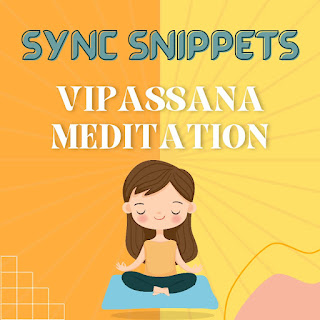Vipassana was derived to be born through Buddhism. Buddhism is a path of our spiritual development and practice which leads to an insight into the true nature of reality. Buddhism is one of the world’s largest religions and originated 2,500 years ago in India. It is a faith that was founded by Siddhartha Gautama.
How to practice Vipassana?
1. It is widely recommended to practice Vipassana early in the morning when you get up.
2.Find a place with complete silence and less disturbances or distractions.
3. Give yourself at least 10-15 minutes in order to practice Vipassana everyday and eventually try increasing the timer day by day as you’re comfortable.
4. Cross your legs and sit on the ground in a comfortable position. D
5. Do not sit with a folded back or neck, try to first relax your body, straighten your back. Posture defines the mood of a person throughout the process so try to maintain a proper posture.
6. Start with inhaling and exhaling. Be aware and mindful of each breathe passing through your nostrils.
7. Do not judge or react on the thoughts arising in your mind. Just observe the feelings and sensations.
8. In case if, even after rigorous concentration and effort you get distracted simply observe the sensations resulting to distractions and return back to your breathe.
9. Practice the same everyday and slowly go on increasing it upto 15 minutes or more.
10. In case if you’re a beginner and need some help in a detailed manner you can always get the help from Youtube videos or can also download the Dhamma.org app which is a Vipassana meditation app. This app includes insightful articles, recordings, materials and resources through which you can also get access to Vipassana courses.
Vipassana is also thaught free of cst as a 10 day meditation retreat all over the world so all of us can get access to this most ancient technique and practice it whenever we want in order to rip its benefits.
Such a Vipassana centre was first operated in Igatpuri, Maharashtra India in 1974. This is known to be the first official Vipassana center by SN Goenka ji. Dhamma Giri located in the Western Ghats in Igatpuri. This meditation centre is the largest and most popular centre which offers Vipassana courses free of cost. Yes that’s right and even you can avail such courses and apply for them online without any application charges. According to the data available, there are almost 74 Vipassana Centres in India and total 168 Vipassana centres operated all over the world.
Gautam Buddha attained enlightenment through Vipassana 2500 years ago and then passed this technique to his fellow disciples in India and even today Vipassana is widely used as a technique in order to experience peace and harmony.
This was it for today’s blog. We hope that you’ll liked this piece of information. Let us know your feedbacks in the comment section. Thank you.
By Pratiksha (Team SYNC)






Good work!👏
ReplyDeleteGreat content ❤️💯
ReplyDeleteWell written 😘
ReplyDeleteFull of new and interesting information 🤠
ReplyDeleteGreat 🙌👏👏🙌
ReplyDelete